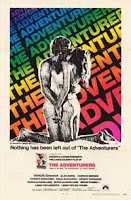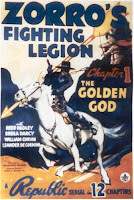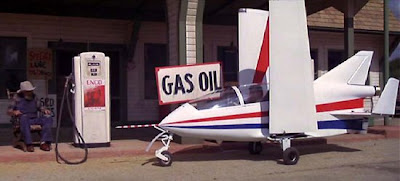The Amazing Zorro
 Zorro's reinventions continue apace. The Amazing Zorro is a cartoon feature made for TV: "as seen on Nickelodeon," trumpets the DVD case. The same disc also contains a version of Treasure Island. Zorro is now quite definitely in the same category as Robert Louis Stevenson's classic adventure tale. Moreover, its durability is surely likewise thanks in part to its untimely anachronism.
Zorro's reinventions continue apace. The Amazing Zorro is a cartoon feature made for TV: "as seen on Nickelodeon," trumpets the DVD case. The same disc also contains a version of Treasure Island. Zorro is now quite definitely in the same category as Robert Louis Stevenson's classic adventure tale. Moreover, its durability is surely likewise thanks in part to its untimely anachronism.The Nickelodeon Zorro (in a film made in fact by a company called DiC Enterprises) very much stays within traditional parameters, much more so than other versions of the tale. The setting is Spanish California in the 1810s, and Don Diego de la Vega is a young aristocrat who (for reasons never fully explained) takes on the Zorro disguise in order to combat injustice. He is aided by his faithful manservant, a mute named Bernardo.
In the movie's opening vignette, Zorro intervenes to save a pair of helpless peasants who are being terrorized by the colonial governor's troops. But thereafter his focus is more often on the local aristocracy, whose lands are subject to state confiscation. So his role is less that of a Robin Hood, taking from the rich and giving to the poor, and more that of defending the old order and landowner privileges.
Among these landowners who have fallen on hard times thanks to the governor's depredations is one Don Carlos Pulido. Stripped of all his property except, that is, for one small hacienda in Southern California, Don Carlos takes all his family down to Los Angeles. His daughter, Luisa, soon becomes the film's love interest, an object of attraction for both Diego/Zorro and the local bad guy among the governor's troops, Captain Ramón.
In the film's final confrontation, Ramón and his men burn down Don Carlos's hacienda, but Alejandro de la Vega, Don Diego's father, comes to his fellow aristocrat's defence, joined by Zorro who eventually reveals his true identity to his father in the heat of battle, to encourage him to continue fighting. Ramón is defeated in a dramatic one-on-one swordfight in the local mission, to which Luisa and the rest of the womenfolk has retreated. And the previously louche and lazy scions of the local landed class rouse themselves to usurp power from the governor and place it firmly in the hands... not of the people, but of the benevolent patriarch, Alejandro.
Zorro has always been something of a cartoon figure: the first comic book of the masked crusader came out from Dell comics in 1949; and both Warner Brothers and Italy's Mondo have released animated versions. The Amazing Zorro stands out not only for its faithfulness to the original story but also for its simplicity: everything here is bold swipes and primary colors; this is Zorro in a nutshell, the kernel of the traditional tale passed down to younger viewers via cable TV.
So one innovation in an otherwise not very innovative film is that these young Nickelodeon viewers are given a character of their own with whom to identify: their position is represented within the movie itself in the person of Luisa's younger brother Nico. Nico is rather keener on the story's adventurous and violent aspects than on the romance between Zorro and his sister. And Nico even gets in on the act himself when, in a low pitch of humiliation for the colonial forces, the young kid out-maneuvers Captain Ramón and his men so ensuring Zorro's escape from his pursuers.
Even more striking is another new character: an attractive and feisty young Latina (or perhaps Native American) by the name of Siva who proves to be a mean hand with an axe and turns out to be Don Carlos's family servant. Siva even proves to be a subsidiary love interest, as she and Diego's servant Bernardo quickly hit it off. As well as including its ostensible target audience in the narrative, is Nickelodeon also thinking of the innumerable maids who are forced to watch TV along with the young charges in the Southern Californian mansions of today's idle rich?
YouTube Link: a dubbed version of the battle to defend Don Carlos's hacienda.













